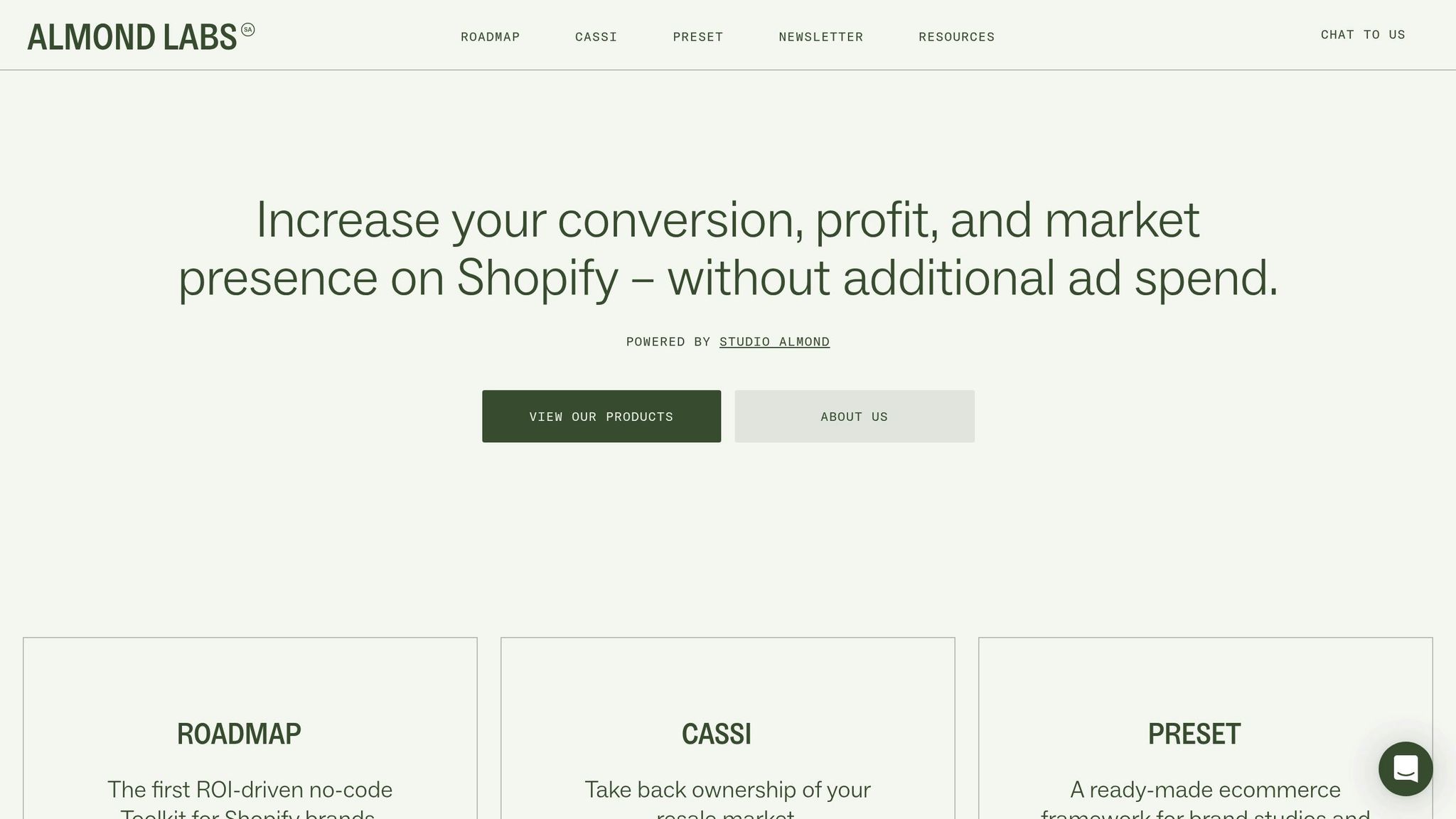
Shopify loyalty integrations can help New Zealand e-commerce brands retain customers, boost revenue, and stand out in a crowded market. Here’s what you need to know:
- Why loyalty programmes matter: Customer acquisition costs have risen by 222% since 2013, making retention critical. Loyal customers spend up to 67% more, and 85% of shoppers say loyalty programmes keep them coming back.
- Top loyalty apps: Shopify offers apps like Smile.io, LoyaltyLion, and Growave, which support rewards, referral systems, and VIP tiers. Monthly costs range from free to NZ$999.
- NZ-specific tips:
- Use NZD currency and ensure GST compliance.
- Include Te Reo Māori greetings and align rewards with Kiwi values, such as free shipping or eco-friendly initiatives.
- Tailor promotions around local events like Waitangi Day or Matariki.
- Set up in minutes: Install apps via the Shopify App Store, customise rewards, and integrate with Shopify POS for seamless online and in-store experiences.
- Boost engagement: Offer points for purchases, social media follows, and referrals. Create tiered rewards (e.g., Silver, Gold, Platinum) and automate workflows for efficiency.
- Track results: Use metrics like redemption rates, Average Order Value (AOV), and Net Promoter Score (NPS) to refine your programme.
Quick Comparison of Popular Loyalty Apps
| App | Monthly Cost (NZD) | Shopify Rating | Key Features |
|---|---|---|---|
| Smile.io | Free – $999 | 4.8/5 | Easy setup, strong integrations |
| LoyaltyLion | Starting at $199 | 4.6/5 | Advanced analytics, customisation |
| Growave | Free – $49 | 4.8/5 | All-in-one reviews and loyalty |
| S Loyalty | Free – $200+ | 4.6/5 | Budget-friendly, unlimited members |
Next steps: Choose an app, set up your loyalty programme, and start rewarding Kiwi customers today. Even a 5% increase in retention can boost profits by up to 75%.
5 Best Shopify Loyalty Apps for Customer Loyalty Reward Programs (2024 Guide)

Setting Up a Loyalty Integration in Shopify
Launching a loyalty programme on Shopify is a simple process. Start by exploring the Shopify App Store for loyalty solutions that meet New Zealand-specific requirements. Below, we'll walk through selecting the right app, configuring rewards, and integrating your loyalty system with Shopify.
Choosing the Right Loyalty App
When picking a loyalty app, ensure it supports NZD currency to avoid conversion issues. This keeps pricing familiar for customers and simplifies your accounting. Look for apps that also handle GST compliance and allow for local customisations.
Localisation features are a big plus. Apps that include options for Te Reo Māori greetings and branding that aligns with Kiwi values can help your programme resonate with New Zealand customers.
Integration is another key factor. Choose an app that works seamlessly with Shopify POS for a unified online and in-store experience. It should also connect with email marketing platforms like Klaviyo for automated messages.
Here’s a quick comparison of popular loyalty apps:
| App | Monthly Cost (NZD) | Shopify Rating | Key Strengths |
|---|---|---|---|
| Smile.io | Free – $999 | 4.8/5 | Easy setup, strong integrations |
| LoyaltyLion | Starting at $199 | 4.6/5 | Advanced analytics, customisation |
| Growave | Free – $49 | 4.8/5 | All-in-one reviews and loyalty |
| S Loyalty | Free – $200+ | 4.6/5 | Budget-friendly, unlimited members |
Also, prioritise apps with responsive customer support that aligns with New Zealand business hours. Make sure the provider complies with the NZ Privacy Act 2020 to safeguard customer data.
Setting Up Rewards for New Zealand Customers
Create a straightforward points system that works in NZD. For example, you could award 10 points for every $1 NZD spent, where 1,000 points equal a $10 NZD reward.
Expand earning opportunities beyond purchases. Offer points for actions like signing up for newsletters (50 points), following your social media (25 points), celebrating birthdays (100 points), or referring friends (500 points for both parties).
Introduce reward tiers to encourage loyalty. For instance:
- Silver: After spending $500 NZD
- Gold: After spending $1,500 NZD
- Platinum: After spending $3,000 NZD
Each tier can offer better point rates and exclusive perks.
Focus on rewards that appeal to Kiwi customers. These might include free shipping, early access to sales, exclusive products, or supporting local environmental initiatives. With the unique geography of New Zealand, free shipping is particularly valued.
Additionally, align promotions with local events like Waitangi Day, ANZAC Day, or the start of summer in December to make your programme more relevant.
Installing and Connecting Loyalty Apps to Shopify
Installing a loyalty app is quick and easy. Begin by searching for your chosen app in the Shopify App Store and reading reviews from other New Zealand businesses.
Most apps, such as Smile.io, require no coding and take just a few minutes to install. Click "Add app", then "Install app", and follow the setup wizard to get started.
Once installed, grant permissions to access customer data, order history, and product information. This lets the app enrol existing customers automatically and track purchases for rewards.
To integrate the loyalty programme into your store, ensure it blends well with your theme. While most apps add loyalty widgets automatically, you may need to adjust their placement and design to match your branding. Test all features, including points displays, redemption processes, and account pages, to ensure a smooth customer experience.
For physical stores, connect the app to Shopify POS. This allows customers to earn and redeem points both online and in-store without manual tracking. Shopify POS makes it easy to unify loyalty points across channels.
Linking your loyalty app to email marketing platforms can enhance its impact. Automated emails, like welcome messages, point balance updates, and reward notifications, keep customers engaged. Research shows that 73% of customers are more likely to recommend businesses with strong loyalty programmes [3].
Finally, run a testing phase. Place test orders to verify that points are awarded and redeemed correctly. Double-check GST calculations, customer data syncing, and email automation. The setup process typically takes two to four hours for a basic programme, though advanced customisations may take longer. Monitor the programme closely during the first week to address any issues promptly.
Improving Loyalty Programmes for the NZ Market
Once your loyalty programme is up and running, the next step is making it better. New Zealand customers have unique preferences and habits that set them apart from other markets. With 97% of Kiwis already enrolled in at least one retail loyalty programme [5], standing out takes thoughtful adjustments and smart automation. By refining your rewards, introducing automation, and leveraging analytics, you can create a programme that truly resonates with Kiwi shoppers.
Designing Reward Structures
Keep it simple when it comes to points. New Zealanders prefer rewards they can use immediately - think "spend what I’ve earned now" or "get something for free right away" [5]. Tailor your programme to offer rewards on everyday essentials like groceries, fuel, and travel, which are top priorities for Kiwi consumers [4]. Partnering with local businesses can also make your programme feel more relevant. For example, offer discounts at iconic Kiwi retailers or experiences like wine tours in Central Otago or adventure activities in Queenstown.
Sustainability is a big deal for New Zealand shoppers. According to a 2021 Ipsos study, Kiwis are increasingly prioritising eco-friendly shopping [4]. Reflect these values in your loyalty programme by offering options like carbon-neutral shipping, tree-planting initiatives, or collaborations with local environmental groups.
Personalisation is key to maintaining customer interest. Use data like purchase history and browsing behaviour to craft rewards that match individual preferences [4]. For instance, if a customer frequently buys outdoor gear, consider offering early access to new hiking products or exclusive discounts on camping equipment.
Gamification can also keep things engaging. Tapping into Kiwis’ love of games and competition, you could introduce challenges or point-based games to encourage participation.
Consider tiered loyalty programmes to reward your best customers. Offer clear distinctions between levels like Silver, Gold, and Platinum, with perks that increase in value. Top-tier perks might include free express shipping, personal shopping consultations, or invites to special events.
Don’t forget New Zealand’s unique calendar. Align promotions with local events like Waitangi Day, ANZAC Day, Matariki, or the summer holidays in December and January. These touchpoints show an understanding of Kiwi culture and create natural opportunities for engagement.
Automating Loyalty Workflows
Automation can turn a loyalty programme into a seamless experience. Tools like Shopify Flow allow businesses to set up custom workflows using triggers, conditions, and actions - no coding required [6]. With billions of automated decisions processed monthly, this platform is well-suited for New Zealand businesses [6].
For example, you can automate customer tagging based on loyalty tier changes, spending habits, or purchase frequency. When a customer reaches Gold status, an automated workflow could tag them and send a congratulatory email outlining their new benefits. This creates a personalised experience without manual effort.
Timing matters, especially in New Zealand’s time zone. Schedule automated emails between 9:00 AM and 6:00 PM NZST to avoid sending messages at inconvenient hours, which could hurt engagement.
Automation also helps maintain momentum. For instance, during busy shopping periods like Black Friday, when 562 million workflows ran during Black Friday Cyber Monday [6], automated reward notifications ensure no customer feels overlooked.
Inventory management can also be streamlined. Set up workflows to pause redemptions when stock runs low or to suggest alternative products, ensuring rewards are always available.
"The biggest limitation of Flow is your imagination, and the things I've been able to automate have been game-changers for our operations." [6]
Integrate automation with social media to expand your programme’s reach. Automatically share customer milestones, announce new rewards, or update programme details on your social platforms. This not only builds social proof but also reduces your marketing workload.
Tracking and Analysing Performance Metrics
Data is the backbone of any successful loyalty programme. Once your workflows are automated, analysing key metrics can help you make informed decisions to improve your programme.
Focus on metrics like redemption rates, Customer Lifetime Value (CLV), Average Order Value (AOV), and Net Promoter Score (NPS). In 2023, global loyalty programme redemption rates averaged 49.8% [7], and loyalty members often show 15% to 40% higher CLV compared to non-members [8]. Breaking these metrics down by customer segments and loyalty tiers can reveal your most valuable relationships.
Regional insights are particularly important in New Zealand. Compare engagement and spending habits between North Island and South Island customers. For instance, urban shoppers in Auckland and Wellington might respond differently to rewards than those in rural areas like Canterbury or Otago. These insights can help you design more targeted promotions.
Average Order Value (AOV) is another important measure. Track how AOV changes after customers join your programme or move up loyalty tiers. A well-designed programme often sees a steady increase in AOV as customers engage more.
Net Promoter Score (NPS) is a good indicator of satisfaction and loyalty. Survey your loyalty members separately from regular customers to understand how they feel about the programme. A high NPS among members is a sign that your strategy is working.
Lastly, consider seasonal trends. New Zealand’s summer holidays, back-to-school season, and winter months all influence shopping behaviour. Monitoring these patterns can help you adjust promotions and rewards to match customer needs throughout the year.
Meeting Compliance and Localisation Requirements
Running a loyalty programme in New Zealand requires navigating specific legal requirements and meeting local expectations. Doing this well helps build trust with Kiwi customers. From privacy laws to tax obligations and cultural considerations, here’s what you need to know to keep your Shopify loyalty programme compliant and aligned with New Zealand values.
Following NZ Privacy Act 2020 Requirements
The Privacy Act 2020 outlines strict rules for how businesses in New Zealand handle personal information. To comply, you’ll need solid systems and clear Privacy Policies to protect customer data.
This Act is based on 13 privacy principles covering data collection, storage, use, and sharing [10][11]. For loyalty programmes, some key points include collecting information only when it’s necessary for business purposes, being transparent about what data is collected and why, securing that data, and limiting how long it’s kept [10].
"The new Act puts a more robust framework around trusted data use, intended to facilitate data innovation that builds trust with consumers. But it also recognises that personal information needs to be protected and businesses have an obligation to ensure their systems and processes reflect this."
- Laura Littlewood, Partner and Privacy Specialist at Bell Gully [12]
Failing to protect customer data can have serious consequences. Take the 2018 Marriott International data breach, which exposed personal information of about 500 million guests and resulted in investigations and hefty fines [Source: Loyalty & Reward Co, 2024]. Similarly, British Airways faced penalties after a breach impacted 420,000 members of its loyalty programme [Source: Loyalty & Reward Co, 2024].
Your Shopify loyalty programme should include detailed Terms and Conditions covering eligibility, enrolment, how points are earned and redeemed, and the circumstances under which the programme may end [9]. Also, keep in mind that businesses are now required to report notifiable privacy breaches [12].
Regularly reviewing your privacy management framework is essential. Conduct privacy "Health Checks", evaluate contracts with suppliers who access personal data, and develop a robust Privacy Breach Response plan. These steps prepare you to respond effectively if a breach occurs [12].
GST Considerations for Loyalty Programmes
Tax compliance is another critical area for loyalty programmes. GST rules in New Zealand can be complex, but the legislation provides flexibility. GST registration is required once your turnover reaches NZ$60,000 (excluding GST) [14]. Under the 2009 legislation, loyalty programme operators can defer GST until points are redeemed, ensuring the correct GST rate is applied at that time [13].
This deferral comes with conditions: at least 25% of the operator’s activity must involve zero-rated goods or services, the loyalty programme must be secondary to the primary business, and systems must track whether GST was applied at the time of points issuance or deferred [13].
Set up your Shopify system to track GST status for transactions and defer GST until points are redeemed. This ensures the appropriate GST rate - standard or zero-rated - is applied, avoiding double taxation on unredeemed rewards. However, this requires precise tracking throughout the lifecycle of the points.
Adding Te Reo Māori and Local Branding
Cultural respect is just as important as legal compliance. Incorporating Te Reo Māori and elements of New Zealand’s culture into your loyalty programme demonstrates respect and strengthens connections with Kiwi customers. However, this must be done thoughtfully. Proper consultation is key when using Te Reo Māori to avoid cultural missteps [15][16].
Building a cultural narrative - what Māori culture refers to as whakapapa - can add depth and authenticity to your brand [17]. If your programme draws on Māori elements tied to a specific region, engage with the local Māori community. When commissioning artwork or designs, work with artists familiar with traditional culture and tikanga to ensure proper representation [17].
Authentic branding goes beyond using native imagery. Kiwi brands are known for reflecting diversity, inclusivity, and a connection to nature [16]. Your loyalty programme should embody New Zealand values, such as innovation and a relaxed, approachable vibe. Use imagery that showcases New Zealand’s unique landscapes and culture, but avoid falling into clichéd representations [16].
Practical steps include hiring local customer support agents who understand Kiwi norms and can handle complex enquiries [18]. Incorporating Te Reo Māori into customer communications can create deeper connections with those who value cultural engagement while introducing non-Māori speakers to the language [18]. Consistency is crucial - align your messaging with local events like Matariki or Waitangi Day, use local references, and time communications for New Zealand business hours to reinforce an authentic Kiwi identity [16][19].
Future Trends in Shopify Loyalty Integrations
Refining loyalty programmes has become a key focus, and emerging trends are pointing to the next wave of advancements. The loyalty landscape is evolving quickly, driven by technological progress and changing customer expectations. For New Zealand businesses, keeping up with these changes offers an opportunity to strengthen customer relationships while aligning with local values. Let’s take a closer look at the trends shaping the future of Shopify loyalty integrations and how Kiwi brands can get ready.
AI-Driven Personalisation
Artificial intelligence is reshaping loyalty programmes by moving away from generic approaches to create highly personalised experiences. By leveraging customer data, AI can predict preferences and customise rewards to suit individual needs.
With statistics showing that 83% of consumers are influenced by personalised rewards and loyalty members spending 4.5 times more, marketers are taking notice. In fact, 29% plan to increase personalisation efforts, while 26% are looking to adopt AI tools more widely[20][22]. Ellie Bradford, an industry expert, summarised this shift:
"AI drives marketing success by revolutionising loyalty programmes and delivering hyper-personalised experiences."[20]
For New Zealand merchants, this means designing loyalty programmes that cater to specific customer preferences. For example, one customer might value early access to new products, while another prefers experiential rewards. AI can also help identify at-risk customers and trigger timely, personalised retention offers to prevent churn[20]. With nearly half of marketers (47%) planning to use AI in their content strategies, integrating these tools is becoming essential for improving customer engagement and delivering targeted offers.
Eco-Friendly Loyalty Programmes
Sustainability is becoming a key focus in loyalty rewards, with eco-friendly programmes encouraging customers to make greener choices. These initiatives align rewards with environmental values, appealing to a growing base of environmentally conscious consumers.
The numbers back up the case for sustainable loyalty initiatives. A staggering 87% of consumers view companies more positively when they support social or environmental causes, and 41% remain loyal to brands offering eco-friendly products[24]. Additionally, 66% of global consumers are willing to pay more for sustainable goods, and products marketed with ESG-related claims have grown by 28% in the past five years compared to 20% for others[24]. Among younger consumers, 40% of Gen Z and millennials consider environmental impact a key factor in their purchases, and 74% are willing to pay extra for sustainable packaging[24][25].
Brands are already embracing this trend. For instance, The Girlfriend Collective rewards customers for recycling old clothing, living by their motto, "Good Things Come To Those Who Don't Waste"[24]. Tentree allows customers to track trees planted through their purchases, while Patagonia’s "Worn Wear" programme promotes repairing, reusing, and recycling clothing. For Kiwi brands, tying rewards to carbon offsets or local environmental projects reflects the Māori principle of kaitiakitanga - guardianship over the environment[23].
As sustainability continues to influence consumer expectations, loyalty platforms are evolving to support these eco-conscious initiatives.
Integrating with Advanced Platforms Like Almond Labs

The future of Shopify loyalty integrations lies in advanced platforms that combine multiple tools to improve efficiency and effectiveness. Almond Labs is a great example, offering solutions tailored to enhance loyalty programmes and streamline operations for New Zealand businesses.
Almond Labs’ Roadmap, a no-code Shopify toolkit, simplifies campaign creation and operational tasks. It allows merchants to design loyalty programmes that include gifts with purchase, discount builders, bundles, and detailed analytics - all without requiring complex coding. This is particularly helpful for smaller businesses looking for powerful tools without the need for costly custom development.
The platform also includes features like the Tag Library and Reviews integration, which enable merchants to incentivise customer engagement through reviews, product shares, and specific interactions[21]. Looking ahead, Almond Labs plans to launch Cassi in Q2 2025 - a buy-back and consignment platform that rewards customers for returning products at the end of their lifecycle. This approach not only aligns with eco-friendly trends but also provides valuable insights into product durability and customer habits.
Platforms like Almond Labs are paving the way for modern loyalty strategies by building on earlier advancements in personalisation and sustainability. They offer Kiwi businesses the tools needed to stay competitive while meeting the expectations of today’s consumers.
sbb-itb-f46a14b
Conclusion
Loyalty integrations give NZ Shopify merchants a powerful way to strengthen customer relationships and fuel growth. With 87% of consumers staying loyal to brands offering these programmes - and sales increasing by 6–30% as a result[26][2] - it's clear that loyalty isn't just about rewards; it's about creating meaningful connections that resonate with Kiwi values and ensure long-term success.
Key Takeaways for NZ Merchants
To make loyalty programmes successful, it starts with knowing your customers and aligning the programme with clear business goals. Did you know that 41% of an ecommerce store's revenue often comes from just 8% of its customers[1]? That’s why customer retention is so critical. A well-crafted loyalty programme can boost member spending by 1.5× compared to non-members[1], proving its value.
Localisation matters. Use NZD and reflect local values, including incorporating Te Reo Māori, to connect with Kiwi consumers. Authenticity and a sense of community are especially important in New Zealand, so your programme should reflect those values.
Also, ensure compliance with the NZ Privacy Act 2020 and GST requirements. Transparent data practices build trust, which is key to the success of any loyalty initiative.
The most effective programmes offer rewards that truly resonate with customers. Aim for a return of 3–10% back in points per dollar spent[1], and go beyond purchases by rewarding actions like social media interactions or product reviews. These extra touchpoints create deeper connections and encourage ongoing engagement with your brand.
Next Steps for Implementing a Loyalty Programme
Ready to get started? Begin by defining your objectives. Are you looking to retain customers, increase average order value, or gather insights? A clear focus will help guide your efforts. And here’s a motivating stat: a 5% increase in customer retention can lead to a 25% jump in profit[1]. It’s worth the effort.
Choose a loyalty model that fits your brand and customer needs. Whether you go for a points-based, tiered, or value-focused programme, the key is to keep it authentic and valuable for your audience.
For an easier setup and smoother management, consider platforms like Almond Labs. Their Roadmap toolkit simplifies campaign creation - no advanced coding skills required. Features like the Tag Library and Reviews integration let you reward customers for more than just purchases. And with Almond Labs’ upcoming Cassi platform, offering buy-back and consignment options, you'll be well-positioned to meet the rising demand for sustainable practices.
Track your metrics from day one. Look at repeat purchase rates, average order value, and redemption rates to see what’s working. This data will help you fine-tune your programme and ensure it delivers real value - not just discounts.
"Data tells the true story of your loyalty programme. The numbers will tell you if you're creating real loyalty or unsustainable discounts."
- Blackbelt Commerce lead analytics specialist [1]
The future of loyalty is evolving, with AI-driven personalisation and eco-conscious initiatives gaining momentum. By establishing a strong foundation now and staying open to new trends, Kiwi merchants can create loyalty programmes that not only deliver quick wins but also secure long-term growth in an increasingly competitive market.
FAQs
How can I make sure my Shopify loyalty programme meets New Zealand's GST and Privacy Act 2020 requirements?
Ensuring GST and Privacy Act Compliance for Your Shopify Loyalty Programme
Running a loyalty programme in New Zealand means navigating both GST rules and the Privacy Act 2020. Here’s what you need to know to stay compliant:
-
GST Compliance: Redeeming loyalty points can be considered a taxable supply under New Zealand law. This means you’ll need to keep detailed records of all transactions involving points. As of April 2023, traditional tax invoices are no longer required. Instead, you must provide taxable supply information, which is crucial for filing accurate GST returns.
-
Privacy Act Compliance: The Privacy Act 2020 requires businesses to handle personal data with care. Be transparent with your customers about how their information will be used. Appoint a privacy officer to oversee compliance, ensure data is accurate and up-to-date, and manage any breaches swiftly. Only collect personal information for lawful and necessary purposes.
By addressing these areas, you can run a loyalty programme that not only complies with New Zealand regulations but also builds trust with your customers.
How can I incorporate Te Reo Māori and Kiwi values into my Shopify loyalty programme?
Incorporating Te Reo Māori and Kiwi Values into Your Shopify Loyalty Programme
Bringing Te Reo Māori and Kiwi values into your Shopify loyalty programme is a meaningful way to connect with your customers while showcasing an awareness of Aotearoa’s rich culture. Here’s how you can do it effectively:
-
Thoughtful Use of Te Reo Māori: Incorporate Te Reo Māori into your programme’s language, such as using it for greetings, naming rewards, or crafting promotional messages. It’s important to ensure translations are accurate and respectful, as this maintains cultural authenticity and shows genuine care.
-
Reflect Kiwi Values: Design your programme to align with principles like community, sustainability, and inclusivity. For instance, you could offer rewards that promote environmentally friendly habits or contribute to local charities and initiatives, reinforcing your brand’s commitment to these values.
-
Engage with Your Customers: Collect feedback regularly to understand how well your programme resonates with your audience. This ongoing dialogue helps you refine and adapt your approach, keeping it relevant and meaningful for your customers.
By integrating these elements, your loyalty programme can become more than just a rewards system - it can serve as a platform for connection and cultural appreciation, creating a deeper bond with your customers.
How can AI-driven personalisation improve my Shopify loyalty programme for customers in New Zealand?
How AI Personalisation Enhances Your Shopify Loyalty Programme
AI can take your Shopify loyalty programme to the next level by customising rewards and experiences based on individual customer preferences. By diving into data like shopping habits, purchase history, and behavioural patterns, AI enables you to craft promotions and incentives that genuinely connect with your New Zealand customers. The result? Happier customers who are more likely to stick around and shop again.
Imagine this: AI can predict when a customer might be ready to make their next purchase. It can then offer well-timed rewards - like discounts or exclusive deals in NZD - to keep them engaged. Providing these highly relevant experiences strengthens customer relationships and boosts retention, which is a win-win for both your customers and your business. Over time, this approach can help drive steady, long-term growth.
Heading 1
Heading 2
Heading 3
Heading 4
Heading 5
Heading 6
Lorem ipsum dolor sit amet, consectetur adipiscing elit, sed do eiusmod tempor incididunt ut labore et dolore magna aliqua. Ut enim ad minim veniam, quis nostrud exercitation ullamco laboris nisi ut aliquip ex ea commodo consequat. Duis aute irure dolor in reprehenderit in voluptate velit esse cillum dolore eu fugiat nulla pariatur.
Block quote
Ordered list
- Item 1
- Item 2
- Item 3
Unordered list
- Item A
- Item B
- Item C
Bold text
Emphasis
Superscript
Subscript




